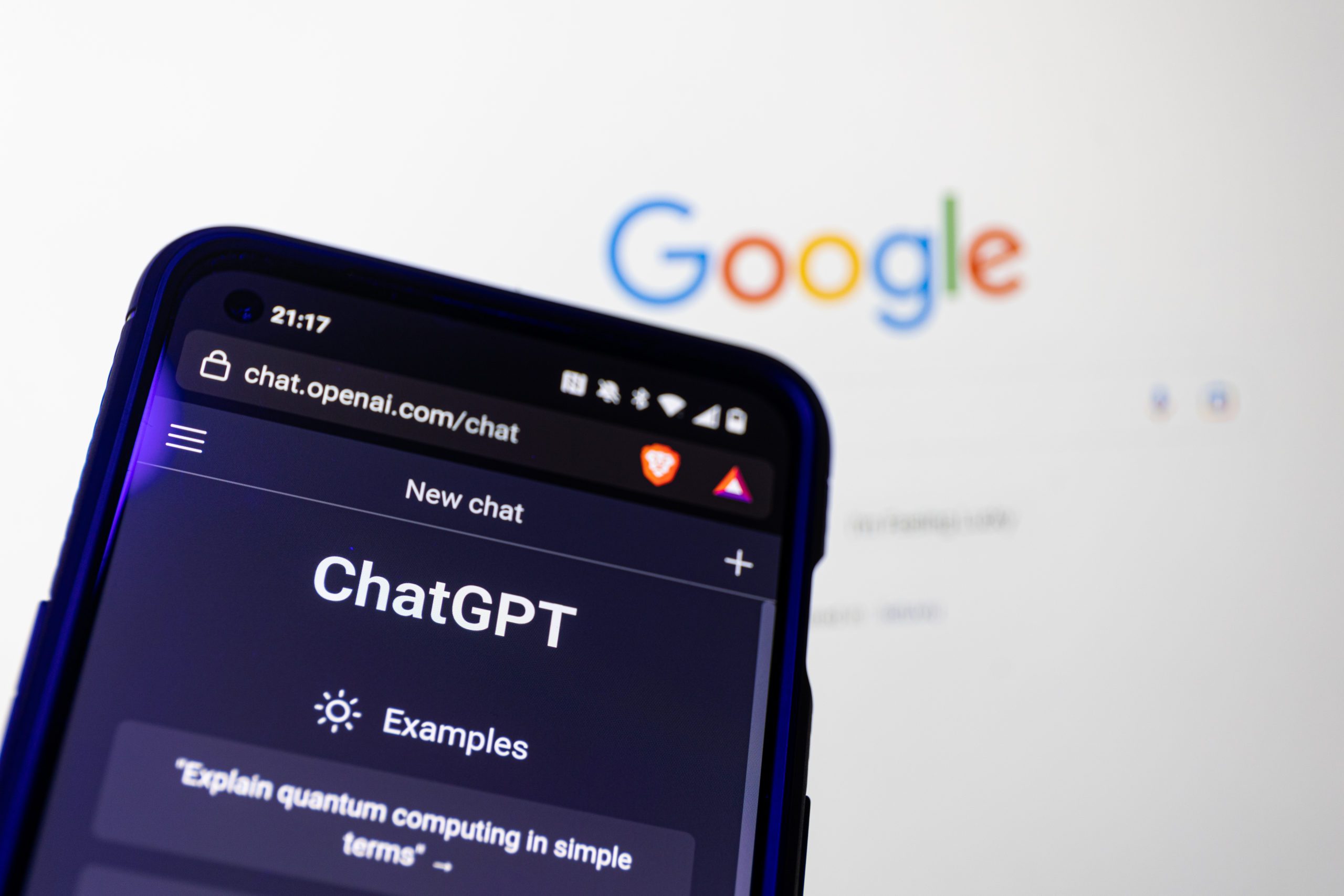
Recent years have seen a remarkable revolution in the field of AI, transforming the way we live and work. This article explores AI’s current capabilities, potential future developments, opportunities, challenges, and implications for society.
Like other sections of AI, large language models such as ChatGPT are increasingly being integrated into our daily lives and work. They have the potential to revolutionize communication, improve efficiency, and drive progress and innovation in various industries.
It is therefore crucial to understand the capabilities and potential future developments of Chat GPT, especially in the education sector where it has already shown rapid impacts.
In this article Shariful is a tech enthusiast and CEO at AppleGadgets LTD has explored the opportunities, challenges, and implications of Chat GPT’s integration into society, highlighting its potential to reshape how we learn.
What is ChatGPT?
ChatGPT is an advanced conversational AI developed by OpenAI. It is based on the GPT-3.5 architecture, which stands for “Generative Pre-trained Transformer 3.5.” GPT-3.5 is a deep learning model that has been trained on a wide range of internet text to understand and generate human-like responses.
ChatGPT is designed to engage in natural language conversations with users, providing relevant and coherent responses based on the input it receives. It can be used for a variety of applications, including answering questions, providing explanations, assisting with tasks, and generating text in a conversational manner.
While ChatGPT is a powerful language model, it’s important to note that it has limitations. It may occasionally produce incorrect or nonsensical answers, and it does not possess real-world knowledge beyond what it has been trained on.
How to Work ChatGPT
To work with ChatGPT, you typically interact with it using an API provided by OpenAI. Here’s a general outline of the steps involved:
Obtain API access: Visit the OpenAI website and sign up for an API key if you haven’t already. This will give you the necessary credentials to access the ChatGPT API.
Set up your development environment: Depending on your programming language of choice, you’ll need to set up your development environment and install any required libraries or dependencies.
Make API requests: Use your preferred programming language to make API requests to the ChatGPT API endpoint. You’ll send a prompt or question as input and receive a response from the model.
Format your input: Prepare your input in a way that the model can understand. Typically, you send a dictionary object to the API with a “prompt” key containing your text. You can also customize the model’s behavior by adding a “temperature” parameter to control the randomness of the generated responses.
Send the API request: Send a POST request to the ChatGPT API endpoint with your input data. Include your API key in the request headers for authentication.
Process the response: Receive the response from the API, which will contain the generated text from ChatGPT. Extract the relevant information from the response and handle it according to your application’s requirements.
Iterate and refine: Review the generated response and continue the conversation by providing the model with additional prompts or questions. You can engage in a back-and-forth dialogue with the model by sending multiple requests in a conversational manner.
It’s important to keep in mind that the specifics of working with ChatGPT can vary based on the programming language or framework you’re using.
OpenAI provides detailed documentation and example code in several programming languages to help you get started. You can refer to the OpenAI API documentation and developer resources for more detailed instructions and examples.
Its Impact on Society
ChatGPT is an advanced language model developed by OpenAI, designed to generate human-like responses to textual prompts and engage in conversations with people.
Based on the GPT architecture, it has a vast repository of knowledge and can answer a wide range of questions, making it a highly versatile and efficient AI tool. Its capabilities have the potential to revolutionize the way we learn, work, and interact with technology.
The impact of artificial intelligence on various industries is becoming increasingly significant, and ChatGPT is no exception. Its capabilities have the potential to revolutionize the way we learn, work, and interact with technology.
In education, ChatGPT is being used to personalize learning and provide students with a more individualized approach to education. Its ability to analyze student performance and provide feedback is also transforming the way assessments are conducted.
ChatGPT in Education: Is it Impactful?
At present in education technology, contributing, ChatGPT is playing a crucial role in revolutionizing education by providing personalized learning experiences. It can assist in language learning by conversing with students in real-time, and providing immediate feedback and corrections.
ChatGPT can also be used for tutoring, providing students with explanations and insights into complex concepts, and answering questions.
Additionally, it can be employed for grading, reducing the workload for educators and increasing the consistency and accuracy of assessments.
Advantages of ChatGPT in Education System
- By providing personalized learning experiences, it can cater to the unique needs and abilities of each student, leading to improved learning outcomes.
- It can also increase accessibility to education for students who may face barriers to learning, such as those with disabilities or those in remote areas.
- ChatGPT can enhance the efficiency of education, freeing up time for educators to focus on more critical tasks and reducing administrative burdens.
Moreover, ChatGPT can adapt to different learning styles and paces, catering to individual needs and promoting inclusive education.
By providing access to a wide range of information and resources, ChatGPT empowers students to explore and delve deeper into various subjects, expanding their knowledge horizons. Through its innovative integration in the classroom, ChatGPT exemplifies how technology can positively impact student learning, equipping them with the skills necessary for the ever-evolving digital era.
ChatGPT has immense potential to transform education and provide students with more effective and efficient learning experiences.
Its role in personalized learning, language learning, tutoring, and grading can lead to significant improvements in student outcomes, accessibility, and efficiency in the education sector.
Ethical Concerns and the Future of ChatGPT
Just like any other technology, ChatGPT brings up ethical concerns that need to be carefully examined and dealt with. One significant concern is bias, as the model’s responses are based on the data it is trained on, which may contain biases or perpetuate stereotypes.
Privacy is another concern, as ChatGPT conversations may contain sensitive or personal information. It is essential to ensure that ChatGPT is developed and implemented in a way that is ethical, transparent, and respects users’ privacy
Despite these concerns, the future of ChatGPT is promising. Ongoing research and development are likely to lead to improvements in the model’s capabilities, including increased accuracy, better handling of biases, and more natural-sounding responses.
ChatGPT could also be used to generate more human-like responses in other AI applications, such as virtual assistants, making them more effective and engaging.
Responsible implementation of ChatGPT in various industries is crucial to avoid unintended consequences or negative impacts.
Developers and organizations must prioritize ethical considerations, ensure transparency and accountability, and regularly monitor and evaluate ChatGPT’s impact on users. It is also essential to educate users about ChatGPT’s limitations and ensure they understand the nature of their interactions with the AI system.
Conclusion
The recent revolution in the field of AI, particularly the advancements in large language models like Chat GPT, has significantly impacted various aspects of our lives.
With the potential to revolutionize communication, enhance productivity, and drive innovation in education, Chat GPT has become a critical tool in modern society.
However, it is also essential to acknowledge the ethical concerns and ensure responsible implementation. As we move forward, it is crucial to understand the current capabilities and potential future developments of AI and Chat GPT to fully leverage their benefits and mitigate any potential drawbacks.
Ultimately, the integration of AI and Chat GPT into our daily lives holds immense potential to create a better and more efficient world, but it must be done thoughtfully and ethically.















